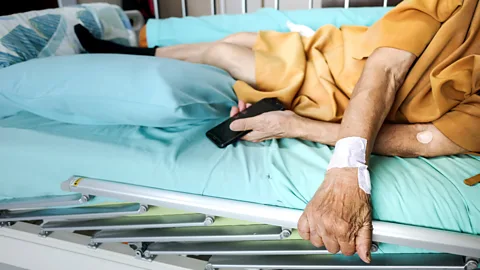
How often should you wash your sheets and pillows?
- Published By Jane Njeri For The Statesman Digital
- 1 month ago
Our sheets and pillows are where we spend a third of our daily lives, and all that contact creates the perfect environment for all sorts of unwanted guests.
After a long day, there's nothing quite like the feeling of sinking into a warm bed, resting your head on a soft pillow and cocooning yourself within a cosy duvet. It isn't just us humans though that find lying in a bed blissful, however.
Look beneath the surface and you may be horrified to learn that your bed linen is host to millions of bacteria, fungi, mites and viruses. Each of them thinks that your bed is heaven too; a warm place that they can grow in, full of sweat, saliva, dead skin cells and food particles to feast on.
Take dust mites. We shed 500 million skin cells a day, which if you are a tiny dust mite is like an all-you-can-eat buffet. Unfortunately, both the bugs and their droppings can trigger allergies, asthma and eczema.
Bed sheets are a haven for bacteria too. For example, in 2013, researchers at the Institut Pasteur de Lille in France analysed the bed linen of hospital patients and found that dirty sheets were brimming with Staphylococcus bacteria, a bacteria commonly found on human skin. Although most species of staphylococcus are benign, some, such as S. aureus, can cause skin infections, acne and even pneumonia in patients with weakened immune systems.
"People carry bacteria as part of their skin microbiome and can shed them in large numbers," says Manal Mohammed, a microbiologist at the University of Westminster in the UK, who was not involved in the study.
 Getty Images
Getty Images"Although these bacteria are typically harmless, they can cause serious illness if they enter the body through open wounds, which are more common in hospitals," Mohammed says.
Hospitals are a rich source for data because hygiene is taken seriously, and bedclothes and pillows are washed between patients. In 2018, scientists at the University of Ibadan in Nigeria found E. coli in unwashed hospital bed clothes, along with other pathogenic bacteria known to cause urinary tract infections, pneumonia, diarrhoea, meningitis and sepsis.
Unclean linen represents a real infection risk in such settings. In 2022, researchers collected samples from the rooms of patients hospitalised with monkeypox (now called mpox). They found that the act of changing bed linen released viral particles into the air. In 2018, a UK healthcare worker was thought to have developed the disease after being exposed to the virus while changing a patient's bedding.
At least in developed countries, hospitals have had to institute rigorous procedures to limit transmission.
"In hospitals, they wash linen at very high temperatures, which kills most of the bacteria," says David Denning, professor of infectious diseases and global health at the University of Manchester in the UK.
The exception is C. difficile, a bacterium which causes diarrhoea, especially in older people. According to Denning, washing sheets can destroy up to half of C. difficile bacteria, but the bacterium's spores are hard to kill. Even so, infection rates of C. difficile have gone down in the UK, suggesting that standard hospital laundry procedures, as long as they are followed, are enough to keep the risk of transmission very low.
Of course, you are more likely to find pathogenic bacteria in hospital linen where sick patients have been sleeping than in the bed clothes of healthy people. But what about your run-of-the-mill pillows and bed sheets at home? In 2013, American bed company Amerisleep claimed they took swabs from a pillowcase that hadn't been washed in a week. The pillowcase contained around three million bacteria per square inch – about 17,000 times more than the average toilet seat.
Meanwhile, in 2006, Denning and colleagues collected six pillows from friends and family. The pillows were in regular use and aged between 18 months and 20 years. All pillows contained fungi, especially the species Aspergillus fumigatus – a type commonly found in soil.
 Getty Images
Getty Images"In terms of the numbers, you're talking billions or trillions of fungal particles in every pillow," says Denning.
"We think the reason why you find so much [fungi] is because most of us sweat at night from our heads. We also all have house dust mites in our beds, and the dust mite poo provides food for the fungus to live on. And then of course the pillow is warmed up every evening because your head is lying on it. So you have moisture, you have food, and you have warmth."
As most of us rarely wash our pillows, the fungi exist in a fairly peaceful state and can survive for years. The only time they are disturbed is when we plump up our pillows, which can release fungal spores into our bedroom. Even if we do launder them, fungi can survive in temperatures up to 50C (122F), and in any case washing pillows may make them even more moist, allowing the fungus to grow further.
Given the time people spend sleeping, and the proximity of the pillow to the mouth, the finding has important implications for patients with respiratory disease, especially asthma and sinusitis. Up to half of people with severe asthma are allergic to Aspergillus fumigatus, and exposure to the fungus can cause chronic lung disease in people who have previously suffered from TB or smoking-related lung disease. According to Denning,while 99.9% of individuals with a healthy immune system can easily cope with inhaling A. fumigatus fungal spores, in immunocompromised people, the fungus can overrun the host's weakened defences and cause life-threatening infections.
"If you have leukaemia, or have had an organ transplant, or are unfortunate enough to have ended up intensive care with Covid or influenza, you get what's called invasive aspergillosis, which is when the fungus just goes into the lungs and just keep going and destroys lung tissue," says Denning.
 Getty Images
Getty ImagesSo if washing pillows doesn't help, is there anything we can do? According to Denning, if you haven't got asthma, or a lung condition or sinus disease, then you should consider changing your pillow every two years. But people who do suffer from these conditions should buy a new pillow every three to six months.
Meanwhile, when it comes to how often you should wash bed covers, most experts recommend doing so on a weekly basis. As well as washing sheets, ironing also reduces the bacterial count of linen.
"If you have nothing else to do with your time you could iron all your sheets carefully, but we've all got bacteria in our bodies anyway, so [to a healthy person] it doesn't really matter," says Denning.
"But if you're somebody who's sick and vulnerable, then it may be more important, and if you have a child that wets the bed then you definitely need to be bit more fastidious about washing and using high temperatures to wash."
Having a pet sleep on the bed will also increase the number of bacteria and fungi, as will not showering before bed, going to bed with dirty socks or sleeping with make-up or lotions on your skin – and that's before we consider breakfast or a midnight snack in bed.
Share on
Tags
SHARE YOUR COMMENT
MORE STORIES FOR YOU
Trending Stories
DJ Mo’s former illicit lo...
- Published By Jane
- January 15, 2024
Mapenzi! Zari and Tanasha...
- Published By Jane
- October 24, 2023
Zuchu Speaks on Diamond P...
- Published By Jane
- October 12, 2023
Hio Ni Upumbavu Wasituche...
- Published By Jane
- November 8, 2023
RECOMMENDED FOR YOU
How to deal with a silent...
- Published By Jedida
- October 16, 2024
How to set yourself up fo...
- Published By Jedida
- October 16, 2024
Postpartum Hemorrhage: Si...
- Published By Jedida
- October 16, 2024
Study reveals long term e...
- Published By Jedida
- October 16, 2024
Latest Stories
7 signs that show you are...
- Published By Jedida
- November 5, 2024
8 habits that can help yo...
- Published By Jedida
- November 5, 2024
Willy Paul terms infideli...
- Published By Jedida
- November 5, 2024
Mammito announces upcomin...
- Published By Jedida
- November 5, 2024



